The Philippines is a country of diverse cultures, religions, and traditions that have been shaped by centuries of history and influences. Among the many aspects of Filipino culture that attract tourists and locals alike are the religious festivals that take place throughout the year. These festivals are not only a way of expressing faith and devotion, but also a way of celebrating the rich heritage and identity of the Filipino people.
Religious festivals in the Philippines are not just to exhibit art, culture, delicacies, and talent. They are also a way of honoring the patron saints, deities, and ancestors that have guided and protected the Filipinos through various challenges and hardships. They are also a way of showing gratitude for the blessings and bounty that have been bestowed upon them. And they are also a way of having fun, socializing, and enjoying life with family, friends, and strangers.

In this article, we will explore some of the most famous and spectacular religious festivals in the Philippines that you should not miss if you want to experience the true spirit and essence of Filipino culture. We will also explain the meaning and significance of these festivals, as well as the types of activities and attractions that you can expect to see and join in. Whether you are a devout Catholic, a curious traveler, or a fun-loving adventurer, there is a religious festival in the Philippines that will suit your taste and preference.
Famous Festivals in the Philippine
The Philippines has hundreds of religious festivals that vary in size, scope, and theme. Some are celebrated nationwide, while others are specific to certain regions, provinces, or towns. Some are ancient and traditional, while others are modern and innovative. Some are solemn and sacred, while others are festive and lively. Here are some of the most popular and well-known religious festivals in the Philippines that you should mark on your calendar:
Sinulog Festival – Cebu (Feast of Santo Niño)

Sinulog Festival is one of the oldest and grandest festivals in the Philippines. It is celebrated every third Sunday of January in Cebu City to honor their patron saint, Señor Santo Niño de Cebu (Holy Child Jesus of Cebu). The festival is a colorful and vibrant display of faith and culture, featuring a grand parade of dancers, musicians, floats, and costumes that follow the rhythm of drums played by locals in honor of Señor Santo Niño de Cebu. The parade is accompanied by religious activities like Masses, processions, and concerts that take place throughout the festival. There are also food stalls selling local delicacies like lechon (roasted pig) and siopao (steamed bun), as well as vendors selling souvenirs and religious items. The highlight of the festival is the fluvial parade, where a replica of the image of Santo Niño is carried on a boat along the Mactan Channel to bless the city and its people. Sinulog Festival attracts millions of tourists every year who come to witness and join this amazing spectacle of faith and culture.
Ati-Atihan Festival – Aklan (Feast of Santo Niño)

Ati-Atihan Festival is another festival that honors Santo Niño, but with a different twist. It is celebrated every third week of January in Kalibo, Aklan on Panay Island. It is considered as “The Mother of All Philippine Festivals” since it dates back to around 800 years ago. The festival commemorates the arrival of Malay settlers who were welcomed by the Atis, the indigenous people who were believed to be the first inhabitants of Panay Island. The settlers painted their faces black to resemble the Atis as a sign of friendship and gratitude. The festival also celebrates the miraculous intervention of Santo Niño who saved the people from droughts and diseases. The festival features a parade of tribes and floats that showcase the history and culture of Aklan. The participants wear colorful costumes and masks that resemble the Atis or other characters from folklore or history. They also dance to the rhythm of drums and chant “Hala Bira! Pwera Pasma!” which means “Go on! No illness!” The festival is a way of expressing gratitude and devotion to Santo Niño, who is believed to have performed miracles for the people of Aklan.
Dinagyang Festival – Iloilo City

Dinagyang Festival is another festival that pays tribute to Santo Niño, as well as the rich history and culture of Iloilo City. It is celebrated every fourth Sunday of January and features a spectacular display of dance, music, and art. The festival is composed of two main events: the Kasadyahan Cultural Competition and the Ati Tribe Competition. The Kasadyahan Cultural Competition showcases the different cultural groups of Iloilo and their respective festivals. At the same time, the Ati Tribe Competition features groups of performers who paint their bodies black and wear colorful costumes and accessories to imitate the Atis. The performers dance to the beat of drums and other instruments, while carrying replicas of Santo Niño or other religious symbols. The festival is a way of celebrating the diversity and unity of Iloilo City, as well as honoring Santo Niño as their protector and patron.
Pahiyas Festival – Lucban, Quezon (Feast of San Isidro Labrador)

Pahiyas Festival is one of the most colorful and festive harvest festivals in the Philippines. It is celebrated every May 15 in Lucban, Quezon in honor of San Isidro Labrador, the patron saint of farmers. The festival is a way of thanking San Isidro Labrador for a bountiful harvest, as well as asking for his continued blessings. The highlight of the festival is the decoration of houses with colorful kiping, which are rice wafers shaped into leaves, flowers, or other designs. The kiping are edible and can be cooked or fried. The houses are also adorned with various fruits, vegetables, flowers, handicrafts, and other products that showcase the abundance and creativity of Lucban. The festival also features a parade of carabaos (water buffaloes), which are decorated with flowers and ribbons, as well as a procession of the image of San Isidro Labrador around the town. The festival is a feast for the eyes and the stomach, as visitors can enjoy the sight of the colorful houses and taste the delicious food prepared by the locals.
Higantes Festival – Angono, Rizal (Feast of San Clemente)

Higantes Festival is a unique and fun-filled festival that features giant paper-mache figures called higantes. It is celebrated every November 23 in Angono, Rizal in honor of San Clemente, the patron saint of fishermen. The festival traces its roots to the Spanish colonial era, when Angono was a hacienda owned by a wealthy family. The workers were not allowed to celebrate fiestas except for one day in honor of San Clemente. To mock their oppressors, they created higantes that resembled them and paraded them around the town. The tradition continued until today, with higantes depicting various characters from folklore, history, politics, or pop culture. The higantes are usually 10 to 12 feet tall and are carried by one or two persons inside them. The festival also features a fluvial parade along Laguna de Bay, where fishermen carry the image of San Clemente on their boats. The festival is a way of expressing humor and creativity, as well as honoring San Clemente as their patron.
Feast of the Black Nazarene – Quiapo, Manila
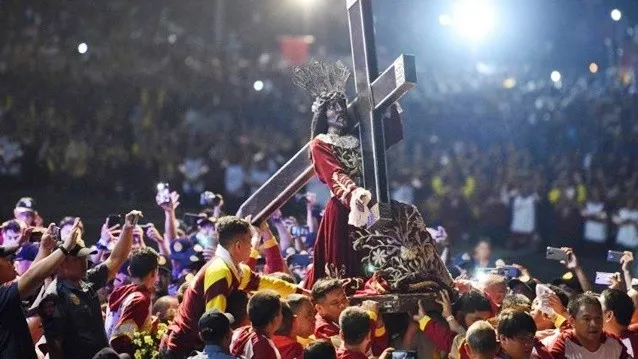
The Feast of the Black Nazarene is one of the most solemn and intense religious festivals in the Philippines. It is celebrated every January 9 in Quiapo, Manila to venerate the image of the Black Nazarene, a dark-skinned wooden statue of Jesus Christ carrying a cross. The statue is believed to have miraculous powers and is revered by millions of devotees who flock to Quiapo, Manila to touch or kiss the image or join the procession. The procession is a grueling and risky event that lasts for several hours, as the statue is carried on a carriage through the narrow and crowded streets of Manila. The devotees wear maroon shirts and wave white towels as they chant “Viva Señor!” (Long live the Lord!) and try to get close to the statue. The festival is a way of expressing extreme faith and devotion, as well as asking for healing, forgiveness, or blessings from the Black Nazarene.
Flores De Mayo (lit. Flowers of May) – in many cities
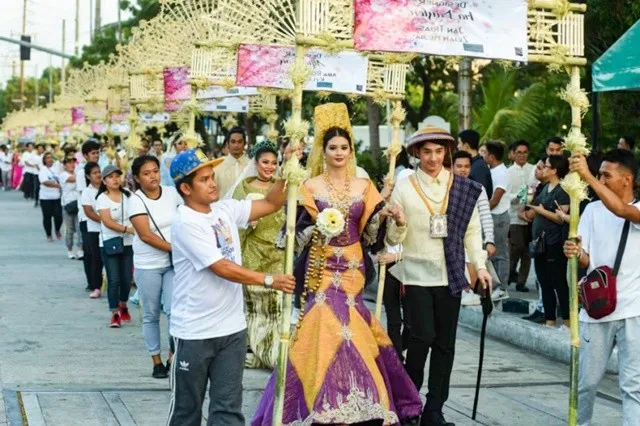
Flores De Mayo is a month-long festival that celebrates the Virgin Mary, the mother of Jesus Christ. It is celebrated in many cities and towns across the Philippines, especially in rural areas. The festival involves offering flowers to the Virgin Mary every day of May, as well as holding Masses, processions, and other religious activities. The highlight of the festival is the Santacruzan, a parade of young women dressed as biblical characters or saints, representing the finding of the Holy Cross by Saint Helena. The parade is usually held on the last day of May and is accompanied by music, dancing, and fireworks. The festival is a way of honoring the Virgin Mary as the Queen of May, as well as showcasing the beauty and grace of Filipino women.
Pintados-Kasadyaan Festival – Tacloban City, Leyte
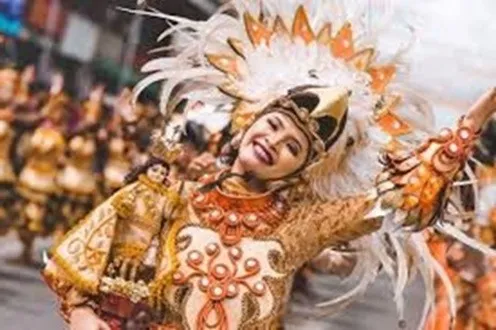
Pintados-Kasadyaan Festival is a fusion of two festivals that celebrate the history and culture of Leyte. It is celebrated every June 29 in Tacloban City, Leyte. The Pintados Festival commemorates the ancient warriors of Leyte who tattooed their bodies with intricate designs to signify their bravery and status. The festival features a parade of dancers who paint their bodies with colorful patterns and wear tribal costumes and accessories. They also perform rituals and dances that depict their way of life and beliefs. The Kasadyaan Festival celebrates the various festivals of Leyte’s towns and cities, showcasing their unique traditions and products. The festival features a parade of floats, performers, and costumes that represent each festival. The festival is a way of preserving and promoting the heritage and identity of Leyte.
Lechon (Roasted Pig) Festival – Batangas
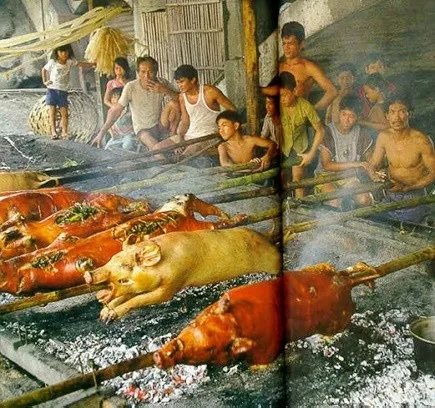
Lechon Festival is a mouth-watering festival that celebrates one of the most iconic dishes in Filipino cuisine: lechon or roasted pig. It is celebrated every June 24 in Balayan, Batangas in honor of Saint John the Baptist. The festival involves roasting hundreds of pigs over charcoal fire until they are crispy and tender. The pigs are then decorated with various costumes and accessories to make them look more festive and appealing. The festival also features a parade of lechons around the town, as well as a water-splashing activity that mimics the baptism of Saint John the Baptist. The festival is a way of indulging in one of the most delicious and satisfying foods in Filipino culture, as well as honoring Saint John the Baptist as their patron.
Hot-air Balloon Festival – Clark, Pampanga

Hot-air Balloon Festival is an exhilarating festival that features various flying activities and attractions. It is celebrated every February in Clark Freeport Zone, Pampanga. The festival showcases dozens of hot-air balloons in different shapes, sizes, and colors that soar into the sky and create a stunning spectacle. The festival also features other flying activities like skydiving, paragliding, ultralight flying, and kite flying. There are also other attractions like trade fairs, exhibits, concerts, and carnival rides. The festival is a way of showcasing the beauty and thrill of flying, as well as promoting tourism and aviation in Clark.
Ligligan Parul (Giant Lantern Festival) – San Fernando, Pampanga
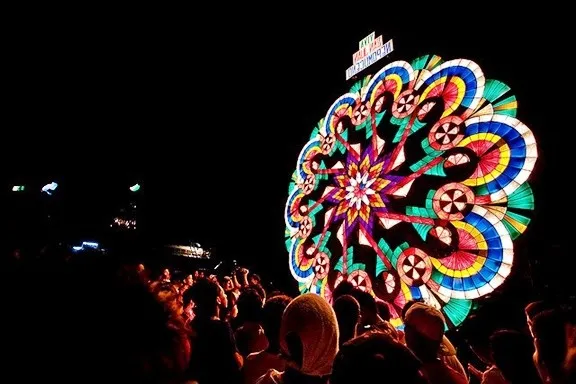
Ligligan Parul or Giant Lantern Festival is a dazzling festival that features huge and elaborate lanterns made of various materials. It is celebrated every December in San Fernando, Pampanga, the “Christmas Capital of the Philippines”. The festival is a competition among different barangays (villages) who create their own lanterns that can measure up to 20 feet in diameter and have thousands of light bulbs. The lanterns are displayed and judged based on their design, craftsmanship, and lighting effects. The festival also features a parade of lanterns around the city, as well as musical performances and fireworks. The festival is a way of expressing the creativity and ingenuity of the Kapampangan people, as well as celebrating the spirit of Christmas.
Panagbenga (Flower) Festival – Baguio City
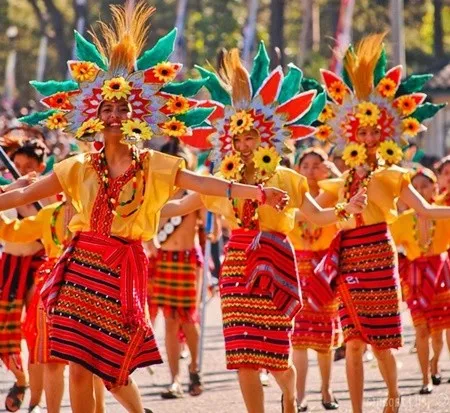
Panagbenga or Flower Festival is a fragrant and colorful festival that celebrates the blooming of flowers in Baguio City, the “Summer Capital of the Philippines”. It is celebrated every February and features various events and activities that showcase the beauty and abundance of flowers in Baguio. The highlight of the festival is the Grand Float Parade, where floats made entirely of fresh flowers are paraded along the main streets of Baguio. The festival also features a Grand Street Dancing Parade, where dancers in floral costumes perform to the beat of drums and gongs. There are also other events like flower exhibitions, garden tours, concerts, and trade fairs. The festival is a way of appreciating the natural beauty and bounty of Baguio, as well as promoting tourism and culture in the city.
Tuna Festival – General Santos City

Tuna Festival is a delicious and exciting festival that celebrates one of the most important industries and products of General Santos City: tuna. It is celebrated every September in General Santos City, the “Tuna Capital of the Philippines”. The festival features various events and activities that highlight the tuna industry and its contribution to the economy and livelihood of the city. The highlight of the festival is the Tuna Float Parade, where floats decorated with tuna-themed designs are paraded along the main streets of General Santos. The festival also features a Tuna Culinary Competition, where chefs and cooks showcase their skills and creativity in preparing tuna dishes. There are also other events like tuna exhibits, fishing contests, concerts, and street parties. The festival is a way of celebrating the bounty and quality of tuna in General Santos, as well as supporting the tuna industry and its workers.
MassKara Festival – Bacolod
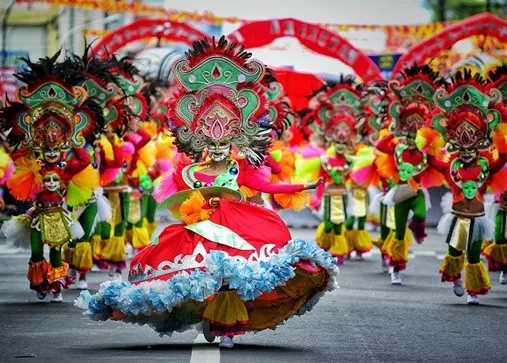
MassKara Festival is a vibrant and lively festival that features colorful masks and costumes. It is celebrated every October in Bacolod City, the “City of Smiles”. The festival was created in 1980 to uplift the spirits of the people who were facing economic and social challenges at that time. The festival symbolizes the resilience and optimism of the Bacolodnons who always smile despite their difficulties. The highlight of the festival is the MassKara Parade, where dancers wear colorful masks and costumes that depict various themes and motifs. The masks are meant to symbolize the happy and optimistic attitude of the Bacolodnons, who always smile despite their challenges. The festival also features a street dance competition, where different barangays compete for the best performance and costume. There are also other events like concerts, beauty pageants, food festivals, and sports tournaments. The festival is a way of showcasing the talent and spirit of Bacolod, as well as celebrating life and happiness.
Kadayawan Festival – Davao City

Kadayawan Festival is a colorful and festive celebration of life and thanksgiving in Davao City, Philippines. The festival is held every third week of August and showcases the rich culture and diversity of the 11 indigenous tribes of Davao. The festival also honors the gifts of nature, such as the fruits, flowers, and crops that are abundant in the region. The festival features various events and activities, such as a fluvial parade, a street dance competition, a floral float parade, and a street party. The festival also attracts millions of tourists who want to experience the beauty and bounty of Davao. Kadayawan Festival is one of the most popular and vibrant festivals in the Philippines that celebrates faith, culture, and tradition.
Meaning of Religious Festivals
Religious festivals in the Philippines are not just mere celebrations of faith and culture. They also have deeper meanings and significance that reflect the values and beliefs of the Filipino people. Here are some of the common meanings and purposes of religious festivals in the Philippines:
- To honor and worship God, saints, deities, or ancestors who have helped and protected the Filipinos in various ways.
- To express gratitude and devotion for the blessings and bounty that have been received from God or nature.
- To ask for forgiveness, healing, guidance, or protection from God or other spiritual beings.
- To commemorate historical or religious events that have shaped the Filipino identity and culture.
- To showcase the diversity and unity of the Filipino people, as well as their creativity and ingenuity.
- To promote tourism and culture in different regions, provinces, or towns.
- To have fun, socialize, and enjoy life with family, friends, and strangers.
Types of Festival in the Philippines
Religious festivals in the Philippines can be classified into different types based on their origin, theme, or style. Here are some of the common types of religious festivals in the Philippines:
- Catholic festivals: These are festivals that are based on Catholic traditions and teachings. They usually celebrate important events or figures in Catholic history or doctrine, such as Jesus Christ, Mary, saints, or angels. They also follow the liturgical calendar of the Catholic Church, which determines the dates and seasons of these festivals. Examples of Catholic festivals are Sinulog, Ati-Atihan, Black Nazarene, Flores de Mayo, Pahiyas, Pintados-Kasadyaan, MassKara, etc.
- Indigenous festivals: These are festivals that are based on indigenous beliefs and practices. They usually celebrate natural phenomena or elements, such as sun, moon, stars, water, fire, earth, etc. They also honor ancestral spirits or deities that are believed to inhabit or influence these natural forces. They often involve rituals or dances that mimic or appease these spirits or deities. Examples of indigenous festivals are Kadayawan, Kaamulan, Moriones, Obando Fertility Dance, etc.
- Fusion festivals: These are festivals that combine Catholic and indigenous elements. They usually celebrate a syncretic form of religion that blends Catholicism with local beliefs and customs. They often involve a mixture of Catholic icons and indigenous symbols or rituals. Examples of fusion festivals are Dinagyang,Higantes, Kadayawan, Kaamulan, Moriones, etc.
- Muslim festivals: These are festivals that are based on Islam and its teachings. They usually celebrate important events or figures in Islamic history or doctrine, such as Muhammad, Allah, angels, or prophets. They also follow the lunar calendar of Islam, which determines the dates and seasons of these festivals. Examples of Muslim festivals are Eid al-Fitr, Eid al-Adha, Ashura, Mawlid, etc.
- Chinese festivals: These are festivals that are based on Chinese culture and traditions. They usually celebrate important events or figures in Chinese history or mythology, such as Confucius, Buddha, dragons, or zodiac animals. They also follow the lunar calendar of China, which determines the dates and seasons of these festivals. Examples of Chinese festivals are Chinese New Year, Lantern Festival, Mid-Autumn Festival, Dragon Boat Festival, etc.
Frequently Asked Questions
Here are some of the frequently asked questions related to religious festivals in the Philippines:
Q: What is the most popular festival in the Philippines?
A: There is no definitive answer to this question, as different festivals have different levels of popularity and appeal among different groups of people. However, some of the most widely celebrated and attended festivals in the Philippines are Sinulog, Ati-Atihan, Black Nazarene, Flores de Mayo, Pahiyas, MassKara, etc.
Q: What is the most colorful festival in the Philippines?
A: Again, this question is subjective and depends on personal preference and taste. However, some of the most colorful and vibrant festivals in the Philippines are Sinulog, Ati-Atihan, Dinagyang, Pintados-Kasadyaan, Pahiyas, MassKara, etc.
Q: What is the most solemn festival in the Philippines?
A: Some of the most solemn and sacred festivals in the Philippines are Black Nazarene, Santo Niño, Obando Fertility Dance, Our Lady of Peñafrancia, Eid al-Fitr, Eid al-Adha, etc.
Q: What is the most fun festival in the Philippines?
A: Some of the most fun and lively festivals in the Philippines are Ati-Atihan,Dinagyang, Higantes, Lechon, Hot-air Balloon, etc.
Q: What are the 9 religious festivals in the Philippines?
A: There are more than 9 religious festivals in the Philippines, but some of the most famous and celebrated ones are:
- Sinulog Festival – Cebu (Feast of Santo Niño)
- Ati-Atihan Festival – Aklan (Feast of Santo Niño)
- Dinagyang Festival – Iloilo City
- Pahiyas Festival – Lucban, Quezon (Feast of San Isidro Labrador)
- Higantes Festival – Angono, Rizal (Feast of San Clemente)
- Feast of the Black Nazarene – Quiapo, Manila
- Flores De Mayo (lit. Flowers of May) – in many cities
- Pintados-Kasadyaan Festival – Tacloban City, Leyte
- Ligligan Parul (Giant Lantern Festival) – San Fernando, Pampanga
Q: What are the 10 examples of religious festival?
A: Some examples of religious festivals are:
- Eid al-Fitr – a Muslim festival that marks the end of Ramadan, the month of fasting and prayer.
- Eid al-Adha – a Muslim festival that commemorates the willingness of Abraham to sacrifice his son Ishmael as an act of obedience to God.
- Ashura – a Muslim festival that commemorates the martyrdom of Husayn ibn Ali, the grandson of Muhammad, at the Battle of Karbala.
- Mawlid – a Muslim festival that celebrates the birth of Muhammad, the founder of Islam.
- Chinese New Year – a Chinese festival that celebrates the beginning of a new year on the lunar calendar.
- Lantern Festival – a Chinese festival that marks the end of the Chinese New Year celebrations, featuring lanterns and fireworks.
- Mid-Autumn Festival – a Chinese festival that celebrates the harvest and the full moon, featuring mooncakes and lanterns.
- Dragon Boat Festival – a Chinese festival that commemorates the death of Qu Yuan, a patriotic poet who drowned himself in protest against corruption.
- Christmas – a Christian festival that celebrates the birth of Jesus Christ, the son of God.
- Easter – a Christian festival that celebrates the resurrection of Jesus Christ from the dead.
Q: What is 1 religious festival in the Philippines?
A: One religious festival in the Philippines is:
- MassKara Festival – Bacolod
MassKara Festival is a vibrant and lively festival that features colorful masks and costumes. It is celebrated every October in Bacolod City, the “City of Smiles”. The festival was created in 1980 to uplift the spirits of the people who were facing economic and social challenges at that time. The festival symbolizes the resilience and optimism of the Bacolodnons who always smile despite their difficulties. The highlight of the festival is the MassKara Parade, where dancers wear colorful masks and costumes that depict various themes and motifs. The masks are meant to symbolize the happy and optimistic attitude of the Bacolodnons, who always smile despite their challenges. The festival also features a street dance competition, where different barangays compete for the best performance and costume. There are also other events like concerts, beauty pageants, food festivals, and sports tournaments. The festival is a way of showcasing the talent and spirit of Bacolod, as well as celebrating life and happiness.
Conclusion
Religious festivals in the Philippines are more than just celebrations of faith and culture. They are also expressions of the Filipino identity and spirit that have been shaped by centuries of history and influences. They are also opportunities to experience the diversity and unity of the Filipino people, as well as their creativity and ingenuity. They are also occasions to have fun, socialize, and enjoy life with family, friends, and strangers.
If you want to witness and join these amazing religious festivals in the Philippines, you should plan your trip ahead and book your tickets and accommodations early. You should also research the dates, locations, and activities of these festivals to make the most out of your visit. You should also respect the customs and traditions of these festivals and follow the rules and regulations set by the organizers. You should also be prepared for large crowds, loud noises, and possible inconveniences that may arise during these festivals.
But most importantly, you should have an open mind and heart when attending these religious festivals in the Philippines. You should appreciate the beauty and meaning of these festivals, as well as the faith and culture of the Filipino people. You should also enjoy the sights, sounds, tastes, and feelings that these festivals offer. You should also share your experiences and stories with others who may be interested in these festivals.